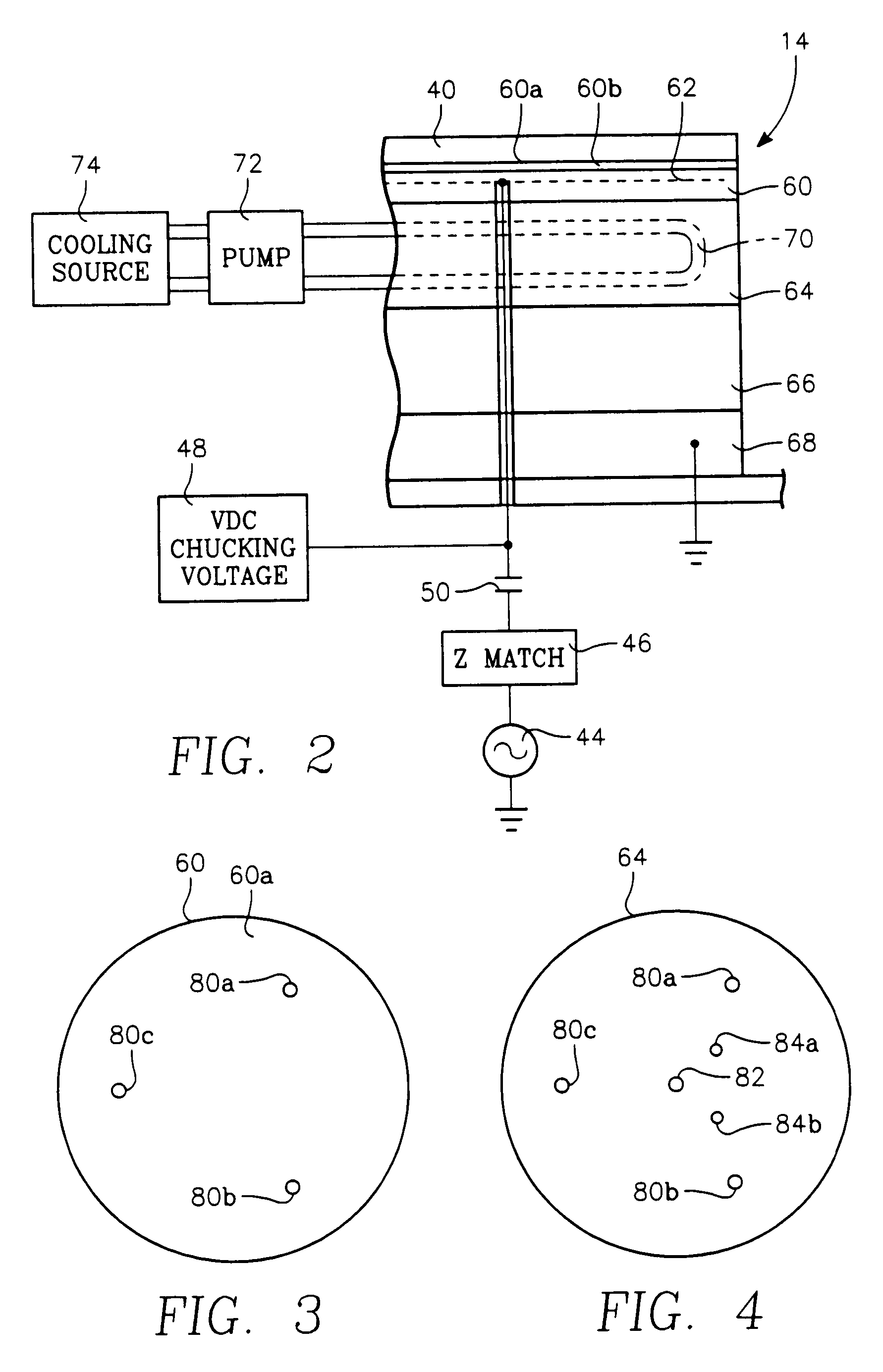Plasma immersion ion implantation process
a technology of ion implantation and plasma, which is applied in the direction of plasma technique, vacuum evaporation coating, coating, etc., can solve the problems of high sheet resistance, low quality deposited layer that is less crystalline and more amorphous, and rough surface of the wafer surfa
- Summary
- Abstract
- Description
- Claims
- Application Information
AI Technical Summary
Benefits of technology
Problems solved by technology
Method used
Image
Examples
working examples
[0092]Plasma immersion ion implantation using a fluoride dopant gas (such as BF3) with a bias voltage of 1 kV can be carried out using ESC temperature in a range between −40 and +60 degrees C., the preferred range being between 0 and +40 degrees C., a chamber wall temperature in the range of 0 to 120 degrees C., the preferred range being 20 to 80 degrees C. If the bias voltage is increased to 8 kV, then the maximum ESC temperature decreases to 60 degrees C. and the preferred maximum ESC temperature decreases to 20 degrees C. The foregoing assumes that Si etching loss be limited to much less than 10 Angstroms. For a hydride dopant gas, the temperature range tends to be higher, because, compared to fluoride dopant gases, hydride dopant gases tend to etch less and promote more deposition: at 1 kV bias and 500 watt source power, the ESC temperature range is 0 to 80 degrees C., the preferred range being 20 to 60 degrees C. At 8 kV, a lower temperature is better, the range being decreased...
PUM
| Property | Measurement | Unit |
|---|---|---|
| dielectric constant | aaaaa | aaaaa |
| pressure | aaaaa | aaaaa |
| temperature | aaaaa | aaaaa |
Abstract
Description
Claims
Application Information
 Login to View More
Login to View More - R&D
- Intellectual Property
- Life Sciences
- Materials
- Tech Scout
- Unparalleled Data Quality
- Higher Quality Content
- 60% Fewer Hallucinations
Browse by: Latest US Patents, China's latest patents, Technical Efficacy Thesaurus, Application Domain, Technology Topic, Popular Technical Reports.
© 2025 PatSnap. All rights reserved.Legal|Privacy policy|Modern Slavery Act Transparency Statement|Sitemap|About US| Contact US: help@patsnap.com



